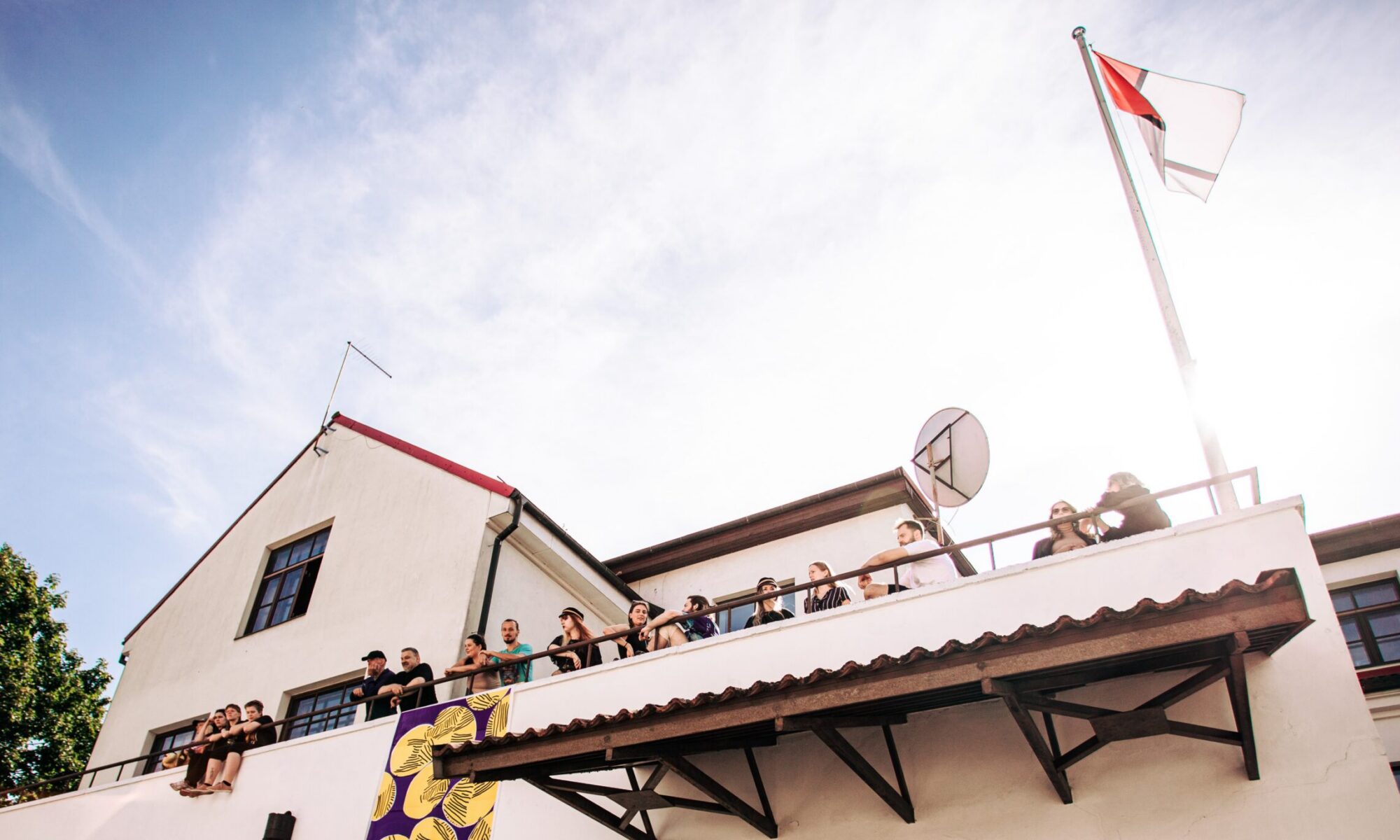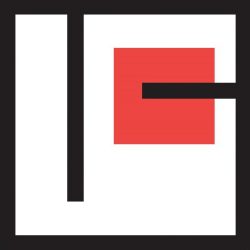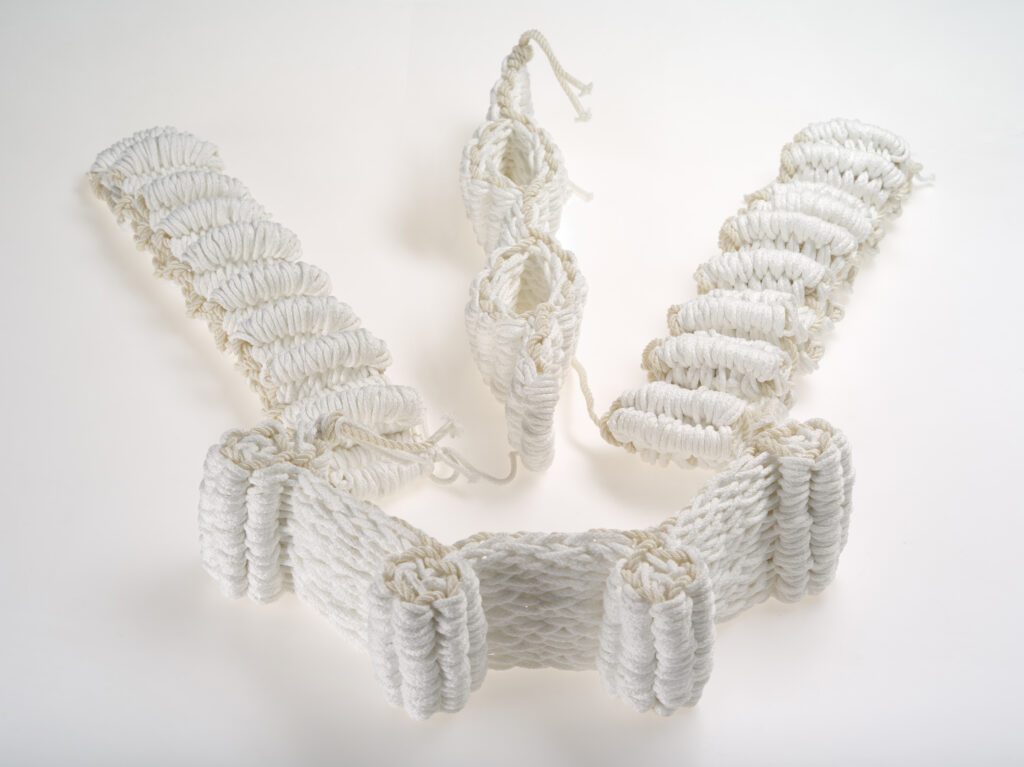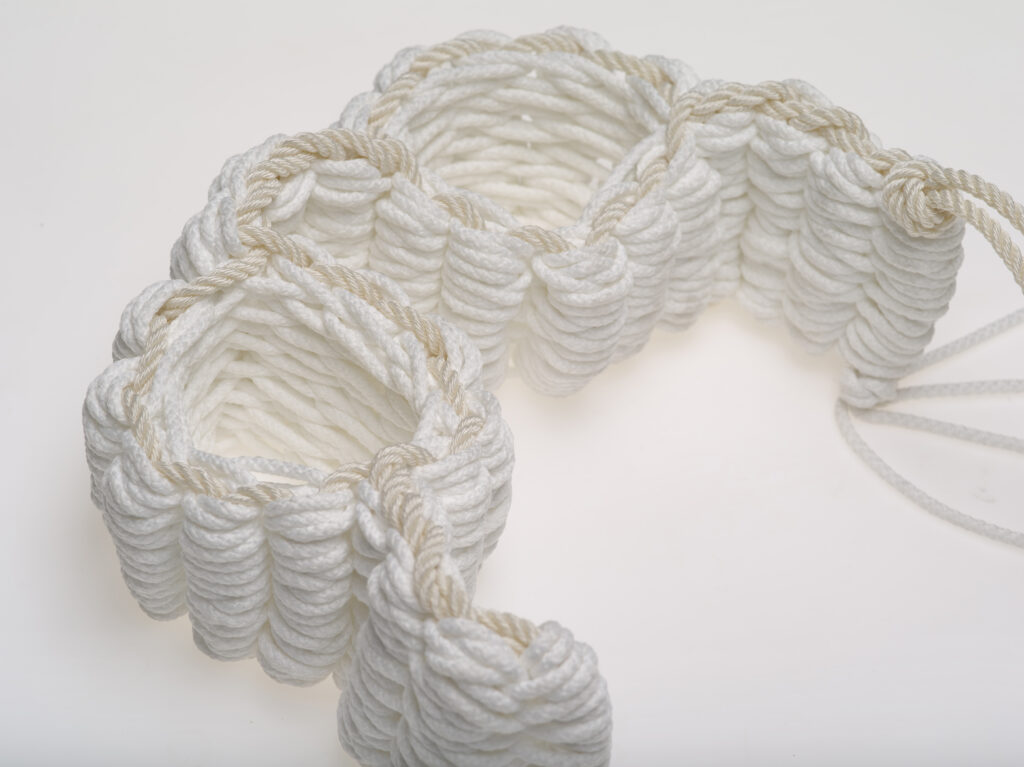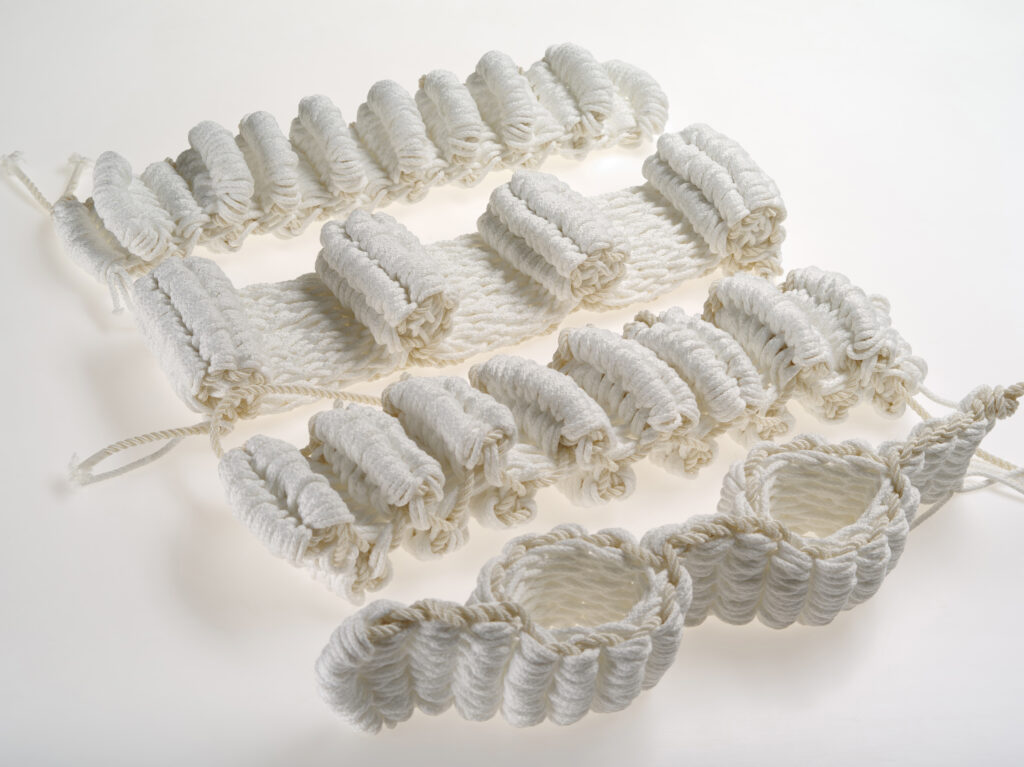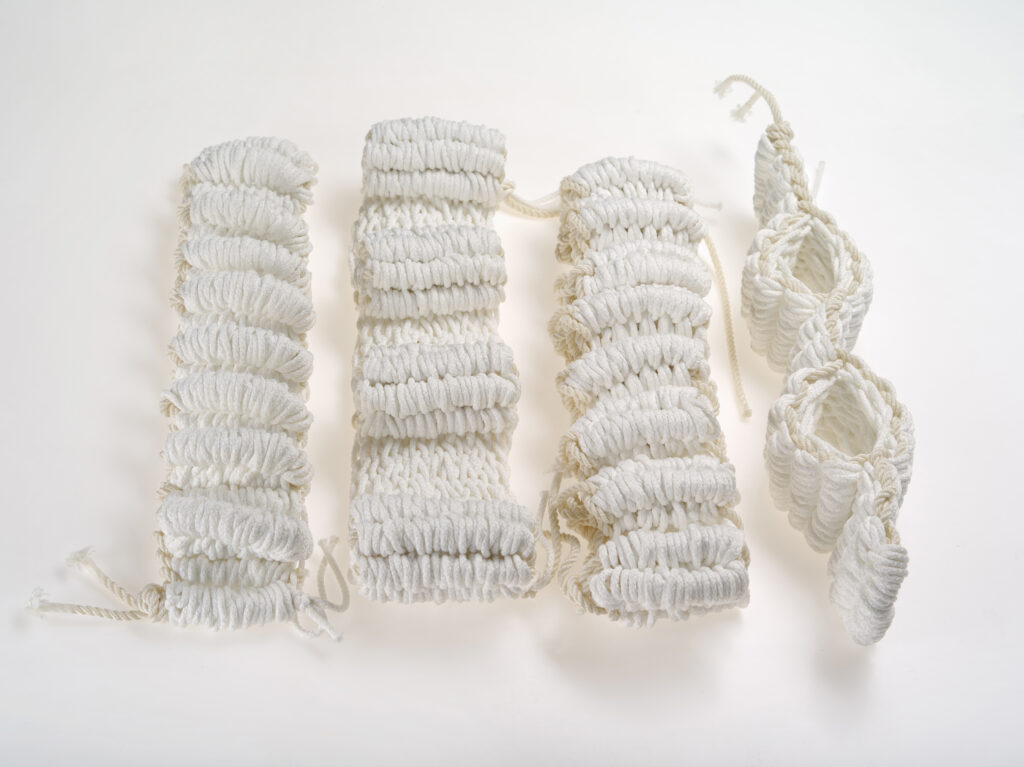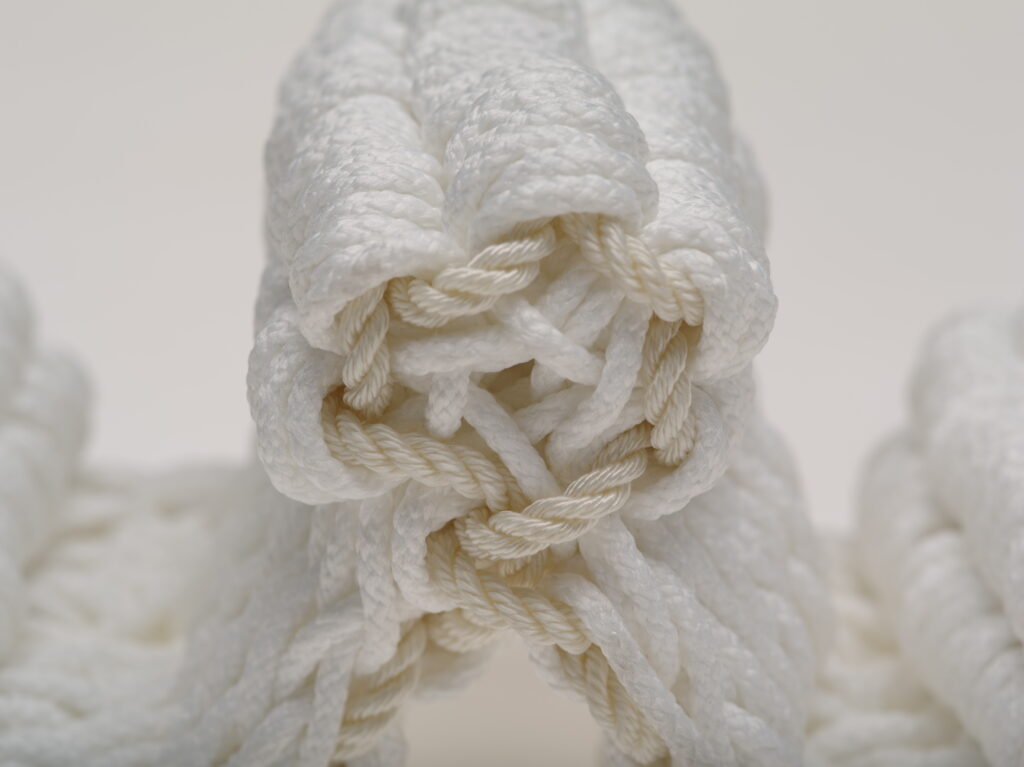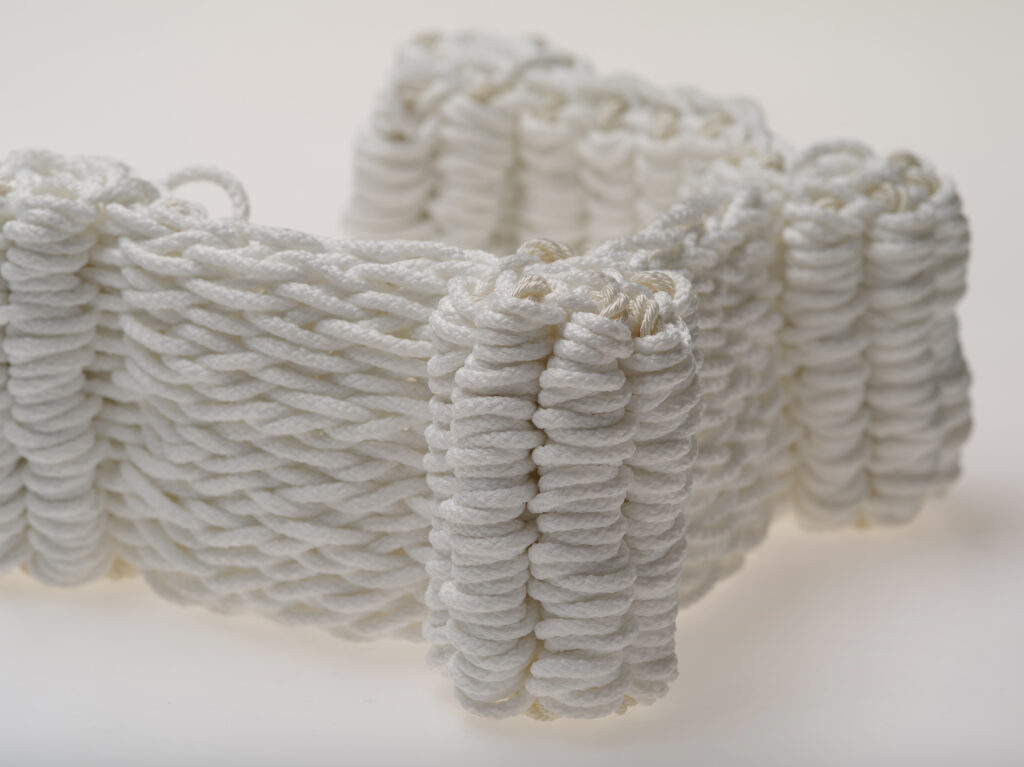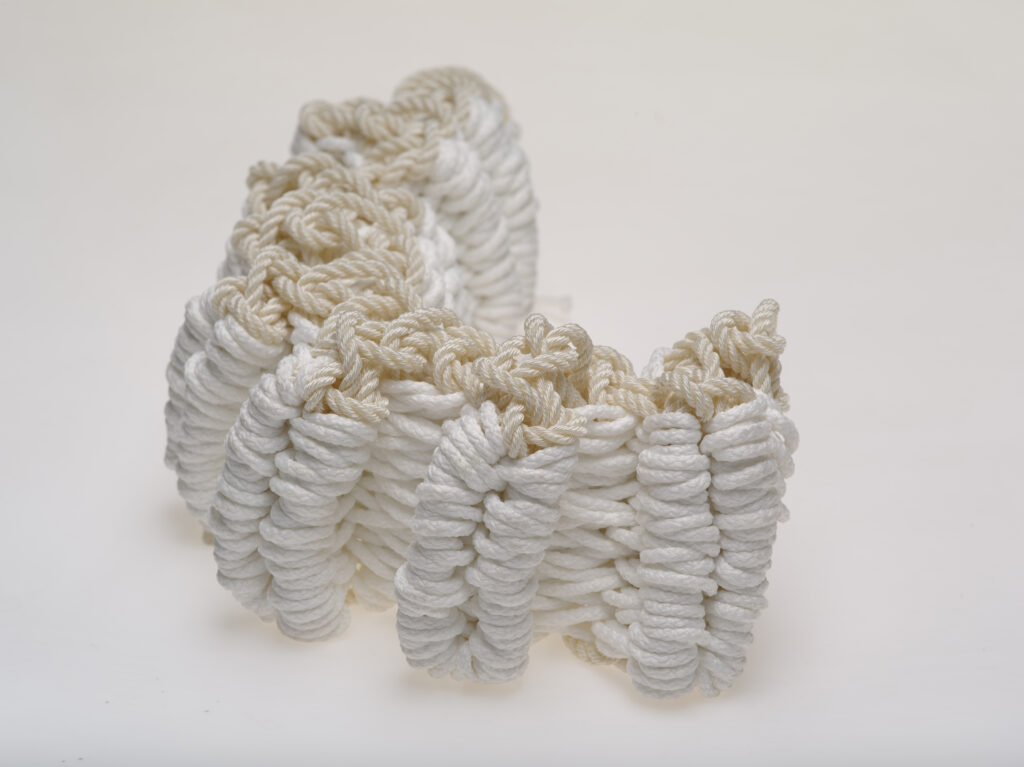MultiWeave on Kadi Pajupuu leiutis, mis võimaldab valmistada uudse struktuuriga tekstiilmaterjali. Struktuur koosneb lõimest ja koest, kuid erinevalt telgedel kootud materjalidest, saab koelõng liikuda ka ümber lõimelõngade haarates neid näiteks o- või 8-kujuliselt. Leiutis toimib CNC tehnoloogia kombineerimisel originaalse lõimelõngatoestamise seadeldisega.
Masinate prototüübid nimetustega MultiWeave (2016) ja SpiderWeave
(2017) ehitati häkatonide raames. 2017. aastal alustati Kõrgemas Kunstikoolis Pallas rakendusuuringuga MultiWeave, mille eesmärk on seadet edasi arendada ja testida sellega valmistatud materjalide omadusi. Rakendusuuringu partnerina finantseerib tarkvaraarendust tekstiiliettevõte Fein-Elast Estonia OÜ. Anna Jõgi programmeeris kasutajaliidese, mis võimaldab juhtida koelõnga liikumist. Koelõnga liikumisjoonisest tehakse g-kood, mis võimaldab koelõngavedajat juhtida x, y ja z telje suunaliselt. Mustri-tarkvaraga saab tutvuda saidil: libahunt.ee/multiweave
MultiWeave projekti esimesse etappi olid kaasatud Pallase tudengid Marta Tuulberg ja Rena Punnison ning I kursuse tudengid õppeaine Struktuur ja materjal raames. Rakendusuuringu II etapis töötasid MultiWeave tehnoloogia katsetamisega edasi Marge Allik, Anett Niine ja Liisi Tamm. Nende valmistatud näidiseid eksoneeriti Tallinnas Disainiööl 2018. a ja 9.04-10.05. 2019 Poolas, Łódź’is 3. noorte tekstiiliikunsti triennaalil YTAT.
MultiWeave, an invention by Kadi Pajupuu, enables to build textile structure that consists of warp and weft but the difference from conventional weaving is that the weft yarn can move around warp yarns forming clusters of connected material. The invention combines CNC technology with an original warp support device.
Prototypes of the machine MultiWeave (2016) and SpiderWeave (2017) were built during hackatons. In 2017 Pallas University of Applied Sciences started an applied research project to develop the machine and test the materials built with it. The partner from textile industry Fein-Elast Estonia is financing the development of the software designed by Anna Jõgi. User interface enables the user to define which warps are present in the forming of the structure and draw the path of the weft. Program creates the g-code for the machine that guides the movement of the weft guider in the direction of W, Y, Z. Software can be seen: libahunt.ee/multiweave
In the first phase of the project, textile students Marta Tuulberg and Rena Punnison along with first year students tested the tecnology. In the second phase Marge Allik, Anett Niine and Liis Tamm continued experiments with the technology. The samples they made were exhibited at Tallinn Design Festival in 2018 and at the 3rd Young Textile Art Triennial (YTAT) in Łódź, Poland April 9 to May 10, 2019.
